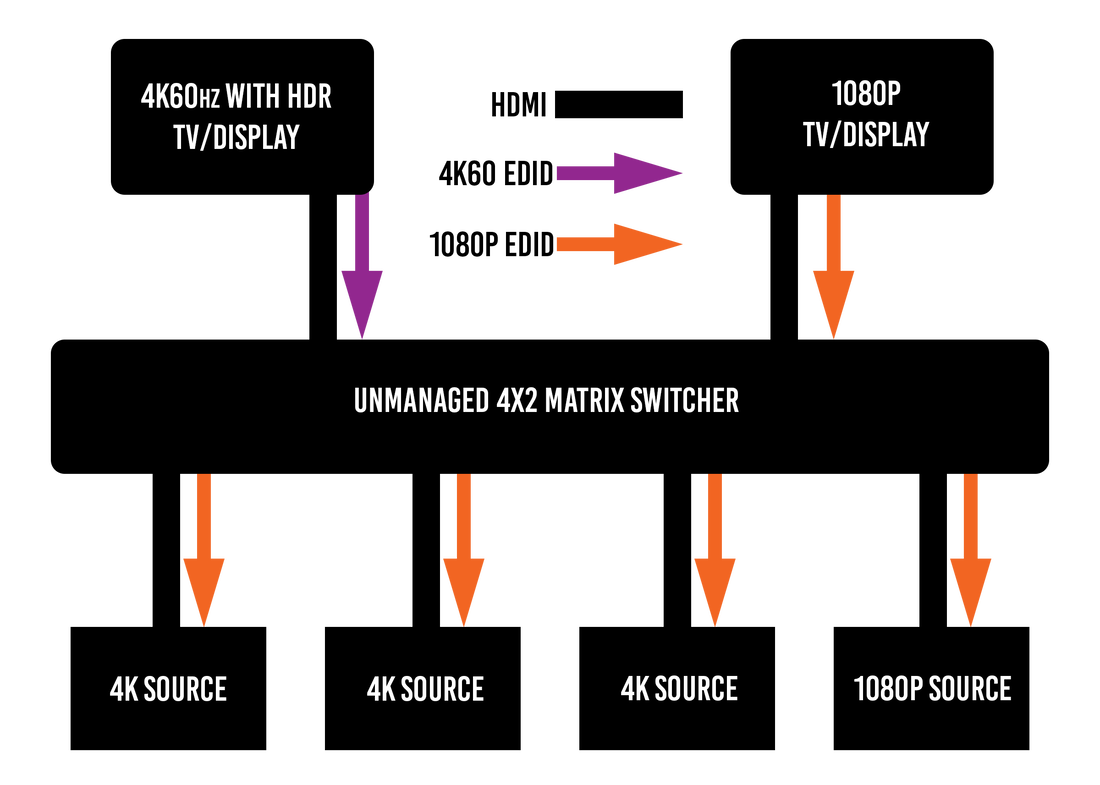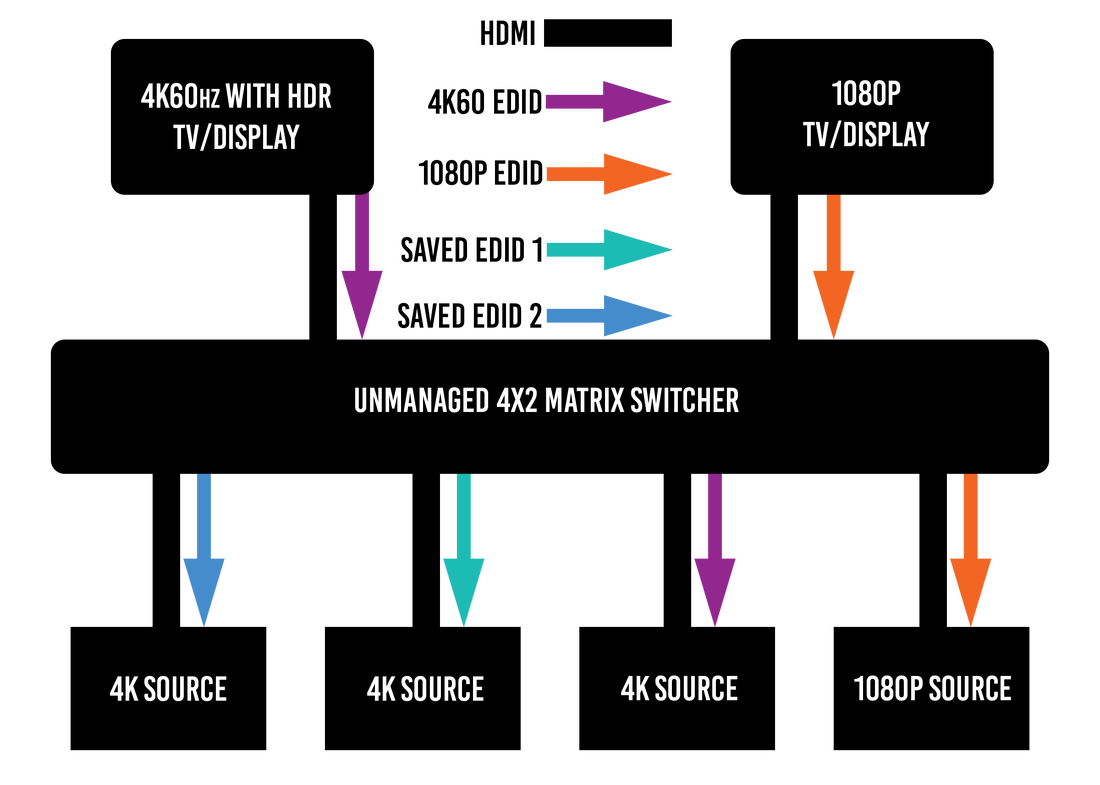Tech Tip: Understanding EDID Management in Distributed Video Systems
For years AV Technology has been plug and play, things just worked....
In today's world of HDMI distribution, things are different. Variables between displays and sources have continued to increase in complexity. Each product has their own detailed specifications that are slightly different than other, similar products. These specifications rely on something called EDID (Extended Display Identification Data). Contained within the EDID information is metadata sending preferred resolution, audio, timing, and a host of other information pertaining to the capabilities of the display.
When a source is connected to the display the EDID information is sent back to the source, which will then generate the correct signal. Most displays have a setting that must be enabled to do HDR formats, these settings can change the EDID information.
In today's world of HDMI distribution, things are different. Variables between displays and sources have continued to increase in complexity. Each product has their own detailed specifications that are slightly different than other, similar products. These specifications rely on something called EDID (Extended Display Identification Data). Contained within the EDID information is metadata sending preferred resolution, audio, timing, and a host of other information pertaining to the capabilities of the display.
When a source is connected to the display the EDID information is sent back to the source, which will then generate the correct signal. Most displays have a setting that must be enabled to do HDR formats, these settings can change the EDID information.
|
|
|
EDID Flow
The largest problem in distributed systems is the mismatch of EDIDs from different models and manufacturers. AV manufacturers handle these issues in two different ways, unmanaged and managed. In the example below we compare two matrix switchers, a 4x2 with unmanaged EDIDs and a 4x2 with managed EDIDs.
Unmanaged EDID
|
Managed EDID
|
- Some displays are picky with their EDIDs and require a signal that meets their specific request for EDID information. This is when an EDID may be required to copy to an input.
- While this may mean legacy displays do not provide an image, a scaler can be used to generate the correct image. A good 4K60 4:4:4 matrix switch should include at least one scalable port, like the AC-MX42-AUHD from AVPro Edge.
- This provides the quality your customers pay for, and with a scalable port, an all-in-one solution.
Once you have an understanding of managing EDID, that knowledge can be used to tackle all kinds of problems both in the field and in design. From shortening sync times, fixing color space, or just getting the best quality audio and video, EDID management can change the whole system.
AVPro Edge has made a huge leap forward in EDID Management. Using the
AC-DA12-AUHD-GEN2
, AVPro has created an EDID Compiler mode which uses the video capabilities of a display or projector and combines it with the audio capabilities of an AVR or soundbar. The DA12 also includes a 1080p downscale port allowing support for a legacy AVR. This can bring Dolby Atmos to your home theater while avoiding AVR limitations and shortening sync times. AVPro Edge continues to push the edge of innovation.
Related Articles
Basic EDID Understanding
Understanding EDID is a must when working with high-bandwidth 4K and HDR. This excerpt from Jeff Murray was taken from his ISE 2018 class that he hosted. This video will give you a quick and basic understanding of what an EDID is and why it can cause ...Tech Tip: Using Multichannel Audio In Distributed Systems
Surround sound has been used in home theaters for decades, imitating realistic environments and helping consumers feel even more immersed in the content that they view. While this is great for a dedicated home theater, problems arise when ...Tech Tip: The 3 Most Common HDMI Issues and Resolutions
HDMI is a marvelous thing, capable of carrying video, audio, and control over a single connection, becoming the standard on almost all displays manufactured today. But that does not mean HDMI doesn't have its faults, and although replacing a cable ...Tech Tip: Shortening Truck Rolls using Proper Preparation
Truck rolls are nearly impossible to avoid, and time spent at these jobs sites means money out of your pocket. Luckily, equipping your technicians with the proper tools can ensure quicker diagnoses and less time spent revisiting jobs. Bullet Train ...Tech Tip: New TVs, New Problems, New Solutions
For years televisions have been plug-and-play. From the introduction of color television, to component, to the early years of HDMI, everything just worked. Today, we live in a world of catching up. Our legacy set top boxes struggle to produce 4K ...


